Like stepping into a frozen sunburst, Wupatki unfurls layers of history and landscape you’ll want to explore. You’ll find stone pueblos, volcanic vistas, and clear trails that reward careful observation. This guide gives practical routes, site highlights, and visitor essentials so you can plan a respectful, efficient visit. Keep going to map out the best times to see the sites, where to park, and what to bring.
Celebrate a Centennial of Wupatki National Monument
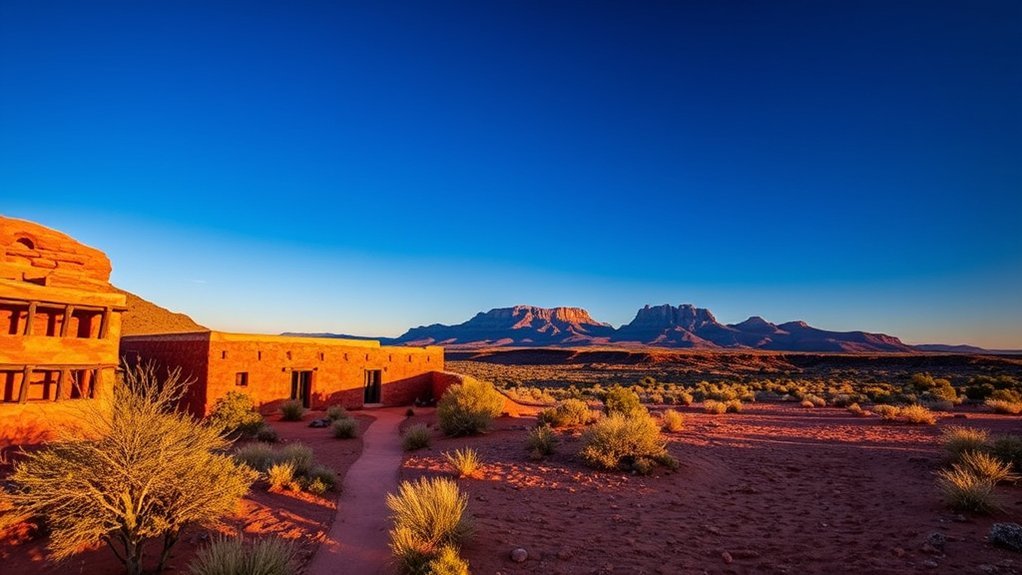
Because Wupatki was designated a national monument by President Calvin Coolidge in 1924, you can join a century of stewardship when the park marks its centennial on December 9, 2024. Plan to visit Wupatki National Monument to connect with preserved places of daily life and ceremony left by the Ancestral Puebloans. Trails lead you past key archaeological sites, including the large Wupatki Pueblo, where masonry rooms and plazas speak to community organization and craft. Interpretive panels and ranger talks explain construction, agriculture, and trade without romanticizing the past. You’ll also find information about living traditions and the continuing relationship of Hopi people and other descendants to this landscape. Use the centennial as an opportunity to learn respectfully and support ongoing preservation efforts.
The Eruption of Sunset Crater and Its Legacy
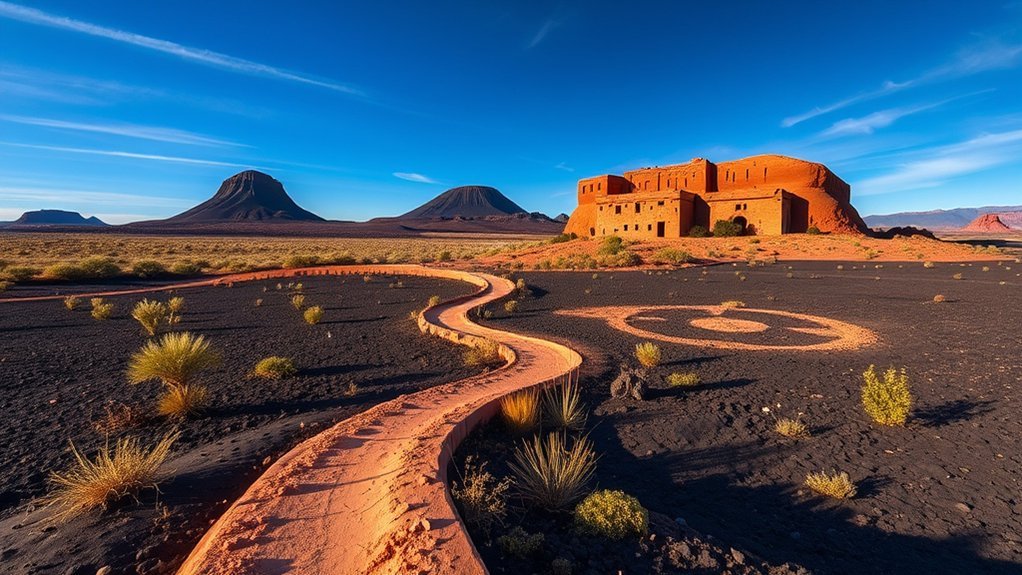
When Sunset Crater blew in 1085, it reshaped the region and forced nearby communities to evacuate while earthquakes and ash settled over the landscape. You’ll see how the eruption of Sunset Crater initially disrupted life, then created nutrient-rich soils that allowed farming to return. As ancestral Puebloans re-established fields, they built durable stone structures you can visit at Wupatki National Monument. That recovery spurred population growth and the rise of a regional trading center where goods and ideas moved across the Colorado Plateau. When you examine archaeological resources here, you’re looking at evidence of resilience: modified soils, irrigation adjustments, and communal architecture. Interpretive signs and trails highlight how a volcanic catastrophe became the foundation for cultural renewal.
Exploring the Villages of Stone: Key Pueblos and Trails
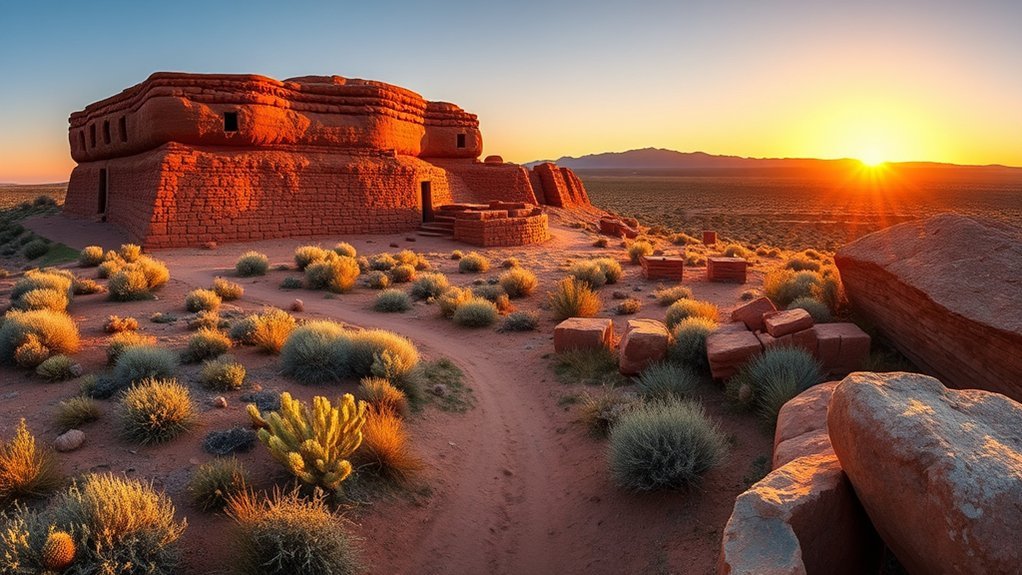
You’ll start at Wupatki Pueblo, the largest settlement with more than 100 rooms, where a 0.5-mile loop reveals a ball court and a natural blowhole. Don’t miss the short Wukoki Tower Trail (0.2 miles) to study the three-story masonry and construction techniques up close. Finish with the Lomaki and Box Canyon trails (each about 0.5 miles) for panoramic views and more fragile ruins that require careful respect.
Wupatki Pueblo Highlights
Curious about how whole communities once rose from volcanic rock and wind-swept plains? You’ll find Wupatki Pueblo here — the largest freestanding pueblo in Northern Arizona — with over 100 rooms, a kiva and a ballcourt that mark its role among ancient sites and archaeological sites tied to Ancestral Puebloan life. Walk short trails to see communal architecture and imagine trade networks that linked this hub to distant peoples.
- Visit the mainWupatki Pueblo complex to study construction and layout.
- Follow the 0.5-mile Wupatki Pueblo Trail for close-up views.
- Note the kiva and ballcourt as social and ceremonial centers.
- Learn how over 2,500 archaeological sites map regional connections.
- Compare Citadel and Wukoki from interpretive signs without heading far.
Wukoki Tower Trail
After exploring Wupatki Pueblo, head 2.5 miles toward Wukoki to see a compact but striking three-story tower pueblo. You’ll walk a short 0.2-mile trail that’s easy to moderate and leads directly to Wukoki Pueblo’s eight-room tower, built from Moenkopi sandstone. Observe the pueblo’s vertical form, defensive placement, and nearby fertile land that supported Ancestral Puebloans agriculture. Stay on the path and don’t climb: preservation rules protect these archaeological sites. Interpretive signs explain construction techniques and community life; pause to take in panoramic views of the surrounding landscape. The quick loop makes Wukoki an efficient stop if you’re exploring multiple ancient structures, offering clear context about regional settlement patterns without a long hike.
Lomaki & Box Canyon
Although only a short 0.5-mile loop, the Lomaki and Box Canyon trail delivers panoramic views and close-up encounters with well-preserved stone rooms that tell the story of Ancestral Puebloan life here. You’ll hike an easy loop at Wupatki that brings you to Lomaki’s multiroom masonry and into Box Canyon’s sheltered rooms, both once active residential and communal spaces over 900 years ago. Notice the red Moenkopi sandstone used in construction and the landscape it shapes. The trail is family-friendly and informative, so you can efficiently connect architecture, geology, and history.
- Easy 0.5-mile round trip
- See Lomaki’s multiroom masonry
- Explore Box Canyon’s sheltered spaces
- Observe red sandstone construction
- Accessible, family-friendly trail
The Blowhole and Unique Geological Features
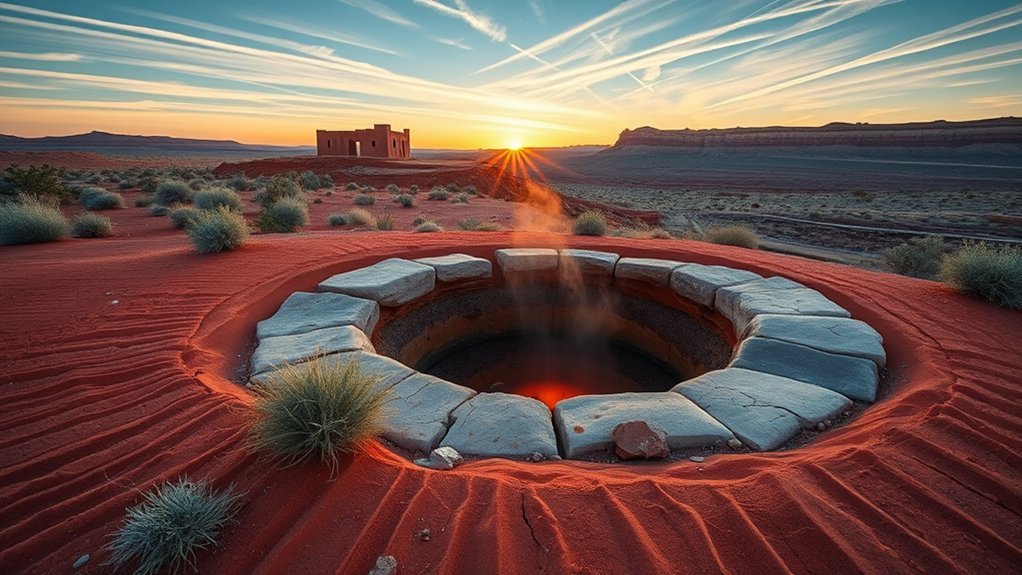
As you approach the Blowhole, you’ll feel a cool rush of air where underground pressure forces ventilation up through the rocks. That sensory surprise links you to the same natural phenomenon the Ancestral Puebloans experienced and helps explain how geology shaped daily life. Stay on designated trails so you can observe this feature safely while preserving its historical and environmental context.
Natural Ventilation Phenomenon
When you stand near the Blowhole at Wupatki, cool air rises from an underground chamber, a natural ventilation system that once helped keep rooms comfortable for Ancestral Puebloan inhabitants. You’ll feel the Blowhole’s breeze and see how geology shapes comfort. This natural ventilation isn’t just a trick of wind; it’s a reminder of ancient engineering and environment. You can use the site to learn practical lessons about climate, settlement, and resource use.
- Experience air forced upward by underground pressure
- Note cooling effects on visitors and structures
- Observe interplay between rock formations and airflow
- Consider how environmental conditions influenced settlement
- Appreciate the connection between geology and Puebloans’ daily life
Approach the feature respectfully and quietly to preserve its character.
Sensory & Historical Connection
The cool breeze rising from the Blowhole doesn’t just feel invigorating—it connects you directly to the daily lives of the Ancestral Puebloans who lived here. At Wupatki, the Blowhole’s forced upward air is a striking geological features lesson you can feel: cooling, persistent, and tied to underground pressure. This sensory experience shows how natural ventilation influenced comfort, storage, and movement. You’ll follow trails that protect the site while letting you touch the past. Notice how landscape and climate shaped settlement choices; the Blowhole anchors that story. Respect markers, stay on paths, and let the cool air sharpen your understanding of how Ancestral Puebloans adapted to an arid world.
| Feature | Meaning | Action |
|---|---|---|
| Blowhole | Living climate | Observe |
| Trail | Protection | Stay on path |
| Airflow | Daily life | Reflect |
| Rock | Time | Photograph |
| Context | Story | Learn |
Practical Information: Hours, Admission, and Directions
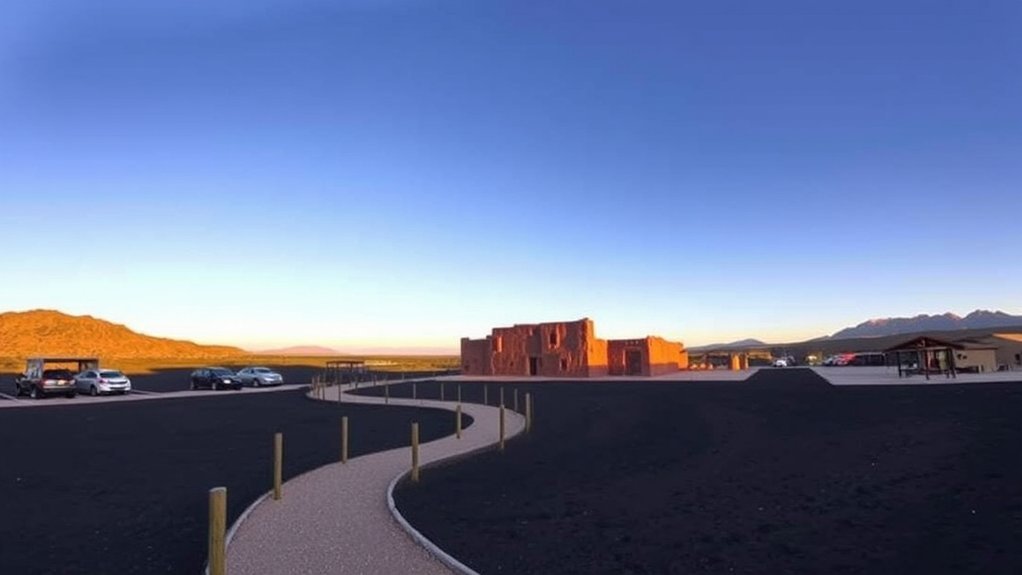
If you’re planning a visit, note that Wupatki is open year-round and the visitor center welcomes guests daily from 9:00 a.m. to 4:30 p.m.; admission is covered by the Sunset Crater Volcano National Monument entrance fee, so one ticket lets you explore both sites. You’ll find clear directions from Flagstaff: drive about 30 miles north and follow the scenic loop off Highway 89 for roughly 34 miles. Peak comfort often comes in early April when temperatures are milder.
- Check hours at the visitor center before you go.
- One admission covers both monuments.
- Follow posted directions for the scenic loop.
- Summer needs adequate water; plan accordingly.
- Winter can bring ice or snow; road access may vary.
Visitor Guidelines and Safety Tips
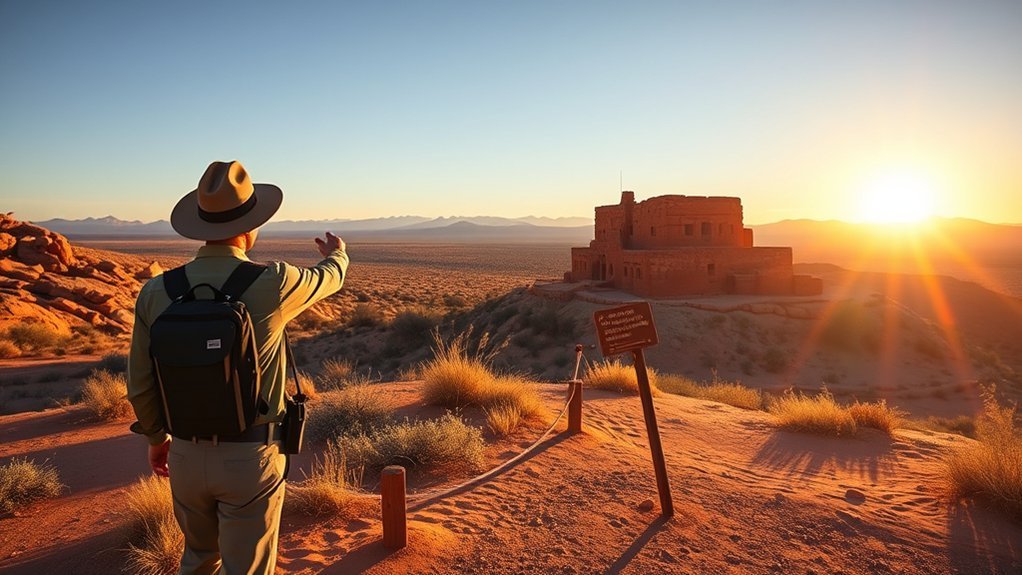
Before you set out on the trails, remember that preserving Wupatki’s ruins and staying safe are your responsibility as a visitor. Follow visitor guidelines: don’t climb on ruins—most sites are “For Viewing Only”—and stay on marked trails to protect archaeological sites and fragile plants. Keep dogs leashed; they’re not allowed inside buildings or on certain trails to protect wildlife and site integrity. Observe the reduced speed limit and only stop in designated areas to avoid congestion and harm to animals. Carry plenty of water in summer and plan for icy or snowy roads in winter. These safety tips will help you enjoy Wupatki respectfully and responsibly while minimizing impacts on cultural resources and the natural environment.
Where to Stay and Suggested Visit Itineraries
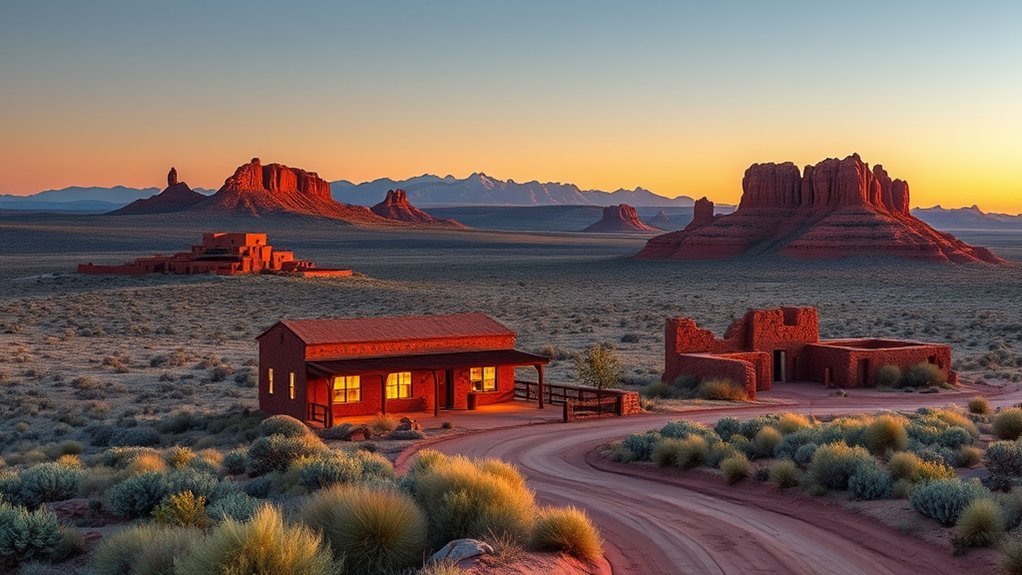
Anyone planning an overnight stay will find Flagstaff about 30 miles south offers the widest range of hotels and services, while Sedona and Williams provide scenic alternatives for day trips or rustic stays. Choose lodging options based on your itinerary and season—camp in Coconino National Forest in warmer months or book early for spring. Plan time for the drive plus trail exploration and visitor center stops.
- Morning: drive the scenic loop, 1–2 hours, then visit the Wupatki Visitor Center.
- Midday: explore trails, 3–4 hours, carry water and sun protection.
- Afternoon: return to Flagstaff or Sedona for dinner.
- Overnight: rustic stays in Williams or hotels in Flagstaff.
- Alternative: combine Wupatki with nearby Sunset Crater for a full day.
Frequently Asked Questions
How to Visit Wupatki National Monument?
Visit Wupatki by driving the scenic loop, follow park hours, plan 1–4 hour travel itineraries, take guided tours at the visitor center, use best visiting tips like water and trails, and explore nearby attractions like Flagstaff.
Is Wupatki Worth Visiting?
Yes — you’ll feel like an explorer: Wupatki history significance and Wupatki cultural heritage come alive as you walk Wupatki hiking trails, follow Wupatki visitor experiences, and use Wupatki photography tips for striking shots.
How Much Is the Entrance Fee to Wupatki National Monument?
The entrance fee is $25 per vehicle (seven days) or $15 for single-occupant motorcycle/bicycle; annual passes cost $45. You’ll find payment methods onsite, fee waiver options via America the Beautiful, and good park accessibility.
What to See at Wupatki?
Like stepping into a time capsule, you’ll explore Wupatki ruins and ancient dwellings, learn cultural significance at the visitor center, hike scenic hiking trails, and admire multiroom structures while following preserved paths and interpretive signs.
Conclusion
You’ve walked ancient stone rooms, traced lava flows from Sunset Crater, and stood where Ancestral Puebloans lived centuries ago. Celebrate Wupatki’s centennial by exploring its trails—over 2,000 people once lived across these villages—then use the visitor center to deepen your understanding. Respect fragile ruins, pack water, and stick to paths. With year-round access and short driving distances between sites, you can craft a half‑day or full‑day visit that fits your schedule.

